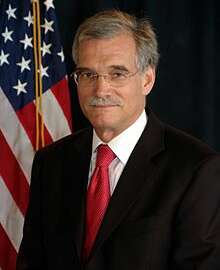
Fine tuning the federal government, one statistic at a time
Panel recommends creating federal entity to collate statistics and provide more privacy protection for stakeholders.
Data is becoming overwhelmingly vital to federal agencies, but it may not always match up or be useful due to statutory and regulatory barriers.
From information provided to agencies by residents receiving certain programs or services, such as health care and retirement, to general statistics collected by contractors and agencies to keep them informed of any changes or feedback from stakeholders, statistics have become a growing commodity in the federal government.
A panel of data professionals along with the National Academy of Sciences have proposed recommendations for combining multiple data sources among agencies into one new government entity, or bureau.
“We think we have a set of recommendations that are quite practical,” said panelist Robert Groves, provost at Georgetown University and former Census Bureau director, on Federal Drive with Tom Temin. “And we think that if we did this [consolidation], we would build a better world, or at least a better country with regard to knowing how things are going.”
In other words, using combined data in this way would create a more efficient way for the government to make decisions without costing more money, because the information is being collected anyway.
One example Groves shared centered on how the Bureau of Labor Statistics could use statistical information from other agencies, bureaus and even day-to-day data such as grocery store scanner data, to help buyers understand price increases in different areas.
Privacy laws and other regulatory barriers may seem difficult challengers on the surface, but Groves said it is the technical barriers that could take the most work.
“We really need more privacy protection than we’ve had in the past and the good news is we now have a set of tools that offer some promise on that,” he said.
Privacy, entity structure
Data collected within each federal agency, as well as general purpose statistics, is not always in the same format. The importance of keeping that data useful and private was the highlight of the panel, Groves said.
“The technical issues will be ones that have to be guided by those objective statisticians and the federal agencies who are keen and filled with great skill to discern the quality of different data,” Groves said. “That will be an issue that must be investigated.”
If successful, this new entity could limit the amount of time each agency spends on collecting data — because it will be shared data. In the long run, this allows the federal government the ability to not bother the same people twice, Groves said.
“We’re actually thinking of the low-hanging fruit here,” he said. “We believe [the potential new entity] should have all the privacy protections and the legal foundations that a federal statistical agency has, which are really quite strong under a legislation that controls the behavior of all those agencies.”
Groves said if an individual within that entity, or an agency, were to violate the privacy of stakeholders whose information is used for statistics, they could face up to five years in jail and be fined up to $250,000.
He said to determine how a statistics-only entity would work, the government first must ask whether the current framework for collecting and protecting data is being used to best benefit the constituents and provide the most pertinent information for how a program, service within the agency should be run.
“The answer is no, not really,” Groves said. “Because there are a set of barriers in place among agencies and programs that collect [this data] that prevent them from being fully analyzed and fully used for statistical purposes.”
Removing the middleman and collating information between agencies and contractors could also lessen that amount of data sitting unused in the vault.
“There are a lot of good examples where the statistical information we see day to day could actually be enriched, if in addition to using surveys and the censuses that they are based on, we added or we supplemented them, augmented the statistics with information from other sources,” Groves said. “And that’s the vision of this in a real way.”
Two main recommendations:
- Combining data sources from government and private sector sources;
- Creating a new entity with legal authority to access data and protect privacy.
For more information on next steps or to read a copy of the panel’s two reports, click here.
Copyright © 2025 Federal News Network. All rights reserved. This website is not intended for users located within the European Economic Area.
Steff Thomas is a digital editor at Federal News Network.





